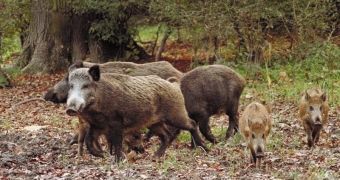Both the Italian Health Ministry and Italian environmental agencies are now trying to make head and tail of how it was that radioactive contamination was discovered in 27 wild boars living in the country's northern Piedmont region.
By the looks of it, these animals, together with several others, were tracked down and killed during the 2012-2013 hunting season.
Soon after the wild boars were captured, the Italian Health Ministry saw fit to carry out some routine tests on some of them, and ended up making a rather unexpected discovery: 27 of these animals had traces of the radioactive isotope cesium-137 in their bodies.
As Sina informs us, the traces of the radioactive isotope cesium-137 were pinned down on the wild boars' tongue and diaphragm.
“The cesium-137 is an artificial radionuclide produced by nuclear fission, and is released from nuclear sites,” the head of the Enea Radiation Protection Institute, Elena Fant, wished to clarify.
Information shared with the public says that the radioactive contamination in some of these wild boars was ten times higher than the legal limit, which is why specialists working with the country's Health Ministry are now busy testing samples of water and soil in the area where these animals were captured.
Furthermore, the Italian Health Ministry intends to test other animals (i.e. rabbits, hares and deer) living in this region, their goal being to make sure that the country's population is not facing any major threats.
Although nobody can yet say for sure how it was that these 27 wild boars came to accumulate radioactive contamination in their bodies, some specialists suspect that the said radioactive isotope made its way into their natural habitat and into their bodies in the aftermath of the Russian Chernobyl nuclear power plant accident.
Meanwhile, several other researchers maintain that two nuclear sites located in the Piedmont region (i.e. the Trino Vercellese station and a site in the Saluggia area) are the more likely origin of the radioactive isotope cesium-137 found in these animals.

 14 DAY TRIAL //
14 DAY TRIAL //